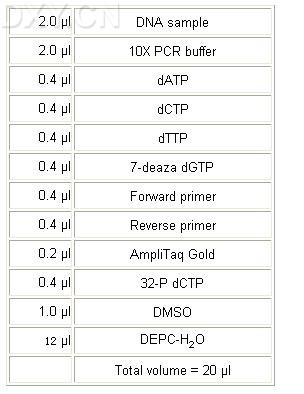The PGK-PCR Clonality Assay (PPCA)
互联网
628
The clonal analysis of cell populations in neoplastic disorders and in solid tumors is an important tool in understanding the origin and progression of disease. The use of glucose-6-phosphate dehydrogenase (G6PD) isozymes in females (1 ) has proven to be extremely informative in these studies (2 ) but its use is limited by the low frequency of G6PD polymorphisms in females. X-linked restriction fragment length polymorphisms (RFLP) of both the phosphoglycerate kinase gene (PGK) and the hypoxanthine phosphoribosyl transferase gene (HPRT), used in conjunction with methylation sensitive enzymes that distinguish the active from inactive X chromosome, has dramatically increased the number of informative samples that can be analyzed for clonality (3). However, RFLP analysis may be limited by the quantity of DNA available. The polymerase chain reaction (PCR) can obviate this problem. The PGK-PCR Clonality Assay (PPCA; 4 ,5 ) can be utilized for clonality determination on as few as 100 cells. PPCA opens the way to the analysis of cells isolated by fluorescence activated cell sorting (FACS), as well as isolated hematopoietic colonies grown in semisolid media, such as methylcellulose. PPCA can also facilitate the study of clonality of blood elements in leukopenic states or any situation where the quantity of DNA is limited. Therefore, there is a broad scope of application for PPCA. The technique is particularly valuable in the study of acquired clonal hematopoietic disorders where the analysis of hematopoietic colonies or FACS sorted cells may give new insight in the pathogenesis of malignancy.










